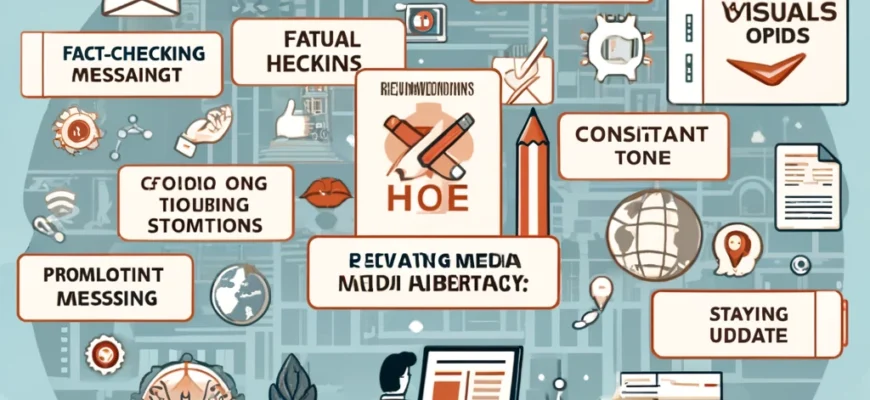Creating a unique and effective style for publications aimed at combating propaganda and disinformation involves a thoughtful approach to content creation, presentation, and dissemination. Here are some recommendations to help you develop your style:
Contents
1. Establish Credibility
- Use Verified Sources: Always rely on verified and credible sources for your information. This builds trust with your audience.
- Fact-Check: Implement a rigorous fact-checking process to ensure accuracy. Cite your sources clearly and transparently.
- Expert Opinions: Include insights from experts in relevant fields to add authority to your publications.
2. Create Engaging and Clear Content
- Concise Messaging: Deliver your messages clearly and concisely. Avoid jargon and overly complex language.
- Visual Aids: Use infographics, charts, and images to illustrate points and make complex information more digestible.
- Storytelling: Incorporate storytelling techniques to make your content more relatable and memorable.
3. Develop a Consistent Tone and Style
- Voice and Tone: Decide on a consistent voice and tone for your publications. Whether it’s formal, conversational, or somewhere in between, consistency is key.
- Branding: Develop a visual style that includes consistent use of colors, fonts, and logos. This helps in building recognition and trust.
- Format: Stick to a consistent format for your articles, whether it’s length, structure, or type of content (e.g., opinion pieces, investigative reports).
4. Focus on Education and Awareness
- Informative Content: Provide educational content that helps your audience understand how to identify and combat propaganda and disinformation.
- Guides and Tutorials: Create guides and tutorials on how to verify information and identify fake news.
- Interactive Content: Use quizzes, interactive infographics, and other engaging formats to educate your audience.
5. Engage with Your Audience
- Social Media Presence: Actively engage with your audience on social media platforms. Respond to comments, answer questions, and foster discussions.
- Community Building: Build a community around your publications where readers can share their experiences and insights.
- Feedback Mechanism: Implement mechanisms to gather feedback from your audience to continually improve your content.
6. Promote Media Literacy
- Media Literacy Campaigns: Run campaigns to raise awareness about the importance of media literacy in the fight against disinformation.
- Workshops and Webinars: Organize workshops and webinars to educate the public on identifying and countering propaganda.
- Collaborate with Educators: Partner with educators to incorporate media literacy into educational curriculums.
7. Stay Updated and Adaptable
- Keep Up with Trends: Stay informed about the latest trends in propaganda and disinformation tactics to adapt your strategies accordingly.
- Continuous Learning: Engage in continuous learning to stay ahead of new developments and tools in the field.
- Adaptation: Be prepared to adapt your content and strategies based on the evolving landscape of disinformation.
By following these recommendations, you can develop a distinctive and effective style for your publications that not only informs and educates your audience but also builds a strong and credible voice in the fight against propaganda and disinformation.









